
CodeNotes: 2021 ISPSC Residential Swimming Pool and Spa Permit & Plan Guidelines
This CodeNotes provides a guide for state and local jurisdictions for plan submittals of residential swimming pools and spas.
The International Swimming Pool and Spa Code® (ISPSC) requires construction documents, engineering calculations, diagrams and other such data be submitted in two or more sets with each application for a permit. When the work is of a “minor nature,” either in scope or needed description, the code official may use his or her judgment in determining the need for a detailed description of the work. For example, the construction documents for an on-ground storable pool could be in the form of the manufacturer’s installation instructions. Section 106 requires the code official to determine compliance with any state professional registration laws as they apply to the preparation of construction documents. The following information is based on the 2021 ISPSC and is provided as a guide for state and local jurisdictions for plan submittals of residential swimming pools and spas.

Drawings Submittal
Two (2) copies of the following drawings are required. Drawings must be drawn to scale, dimensioned and of sufficient clarity. Drawings must be submitted along with a completed permit application form.
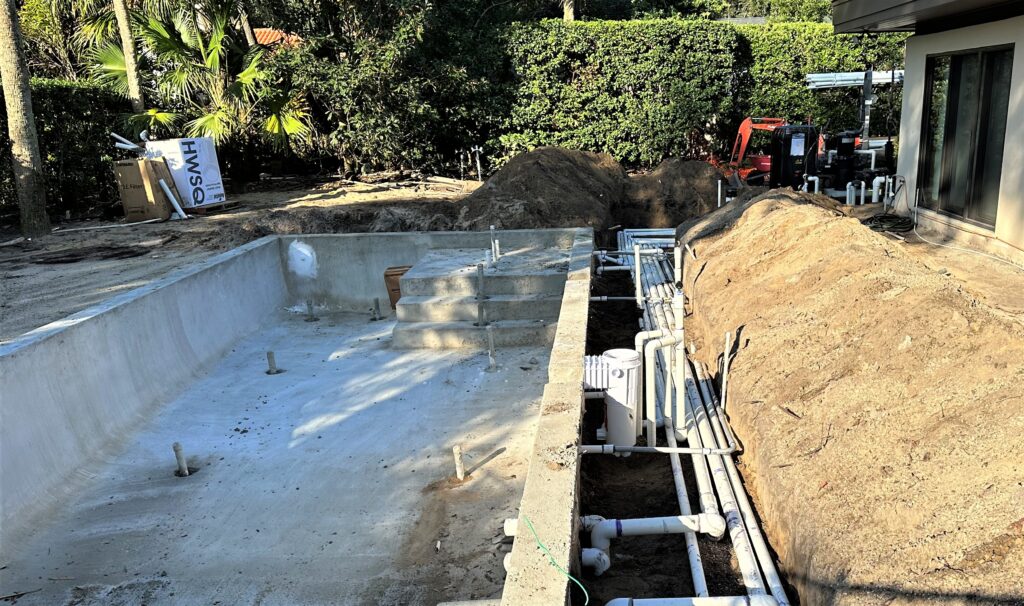
Professional Certification
Depth of the swimming pool should maintain a ratio of 1:1 from the nearest foundation up to a maximum depth of 5’-0” (i.e. for a depth of 5’-0” the pool must be located 5’-0” from the nearest foundation) otherwise an engineered drawing should be provided.
Necessary Drawings
The following is a general outline of what items may be required on drawings necessary for plan review. (Building inspections may request additional information.)
- Site plan shall include all dimensions, for example (scale: 1”=20’-0”) including the location of the pool in reference to the property line and all building locations. All easements must be shown on site plan.
- Pool plans must include all dimensions and be to scale. Property lines must be shown on plans. Pool plans must have all pool specs and include all pool equipment.
- Section through the pool structure must include all depth dimensions.
- Equipment drawings’ diagrams must include dimensions in reference to the property line.
- Submitted above-ground and in-ground swimming pool plans must bear the applicable electric utility company approval stamp for clearance from power lines.
- All decking is required to be shown on the pool plans. Decking is prohibited in utility/electric easements.
- Onground storable pools shall be installed in accordance with the manufacturer’s instructions. Decks provided by the pool manufacturer shall be installed in accordance with the manufacturer’s instructions. Decks fabricated on site shall be in accordance with the International Residential Code® (IRC®).
- Onground storable residential pool vinyl liners shall have the identification number affixed to the liner.
- Diving pools require:
- Minimum water envelope with dimensions drawn inside of pool on the pool plans. Reference Table 804.1 and Figure 804.1 of the 2021 ISPSC.
- Diving boards shall be installed in accordance with the manufacturer’s instructions.
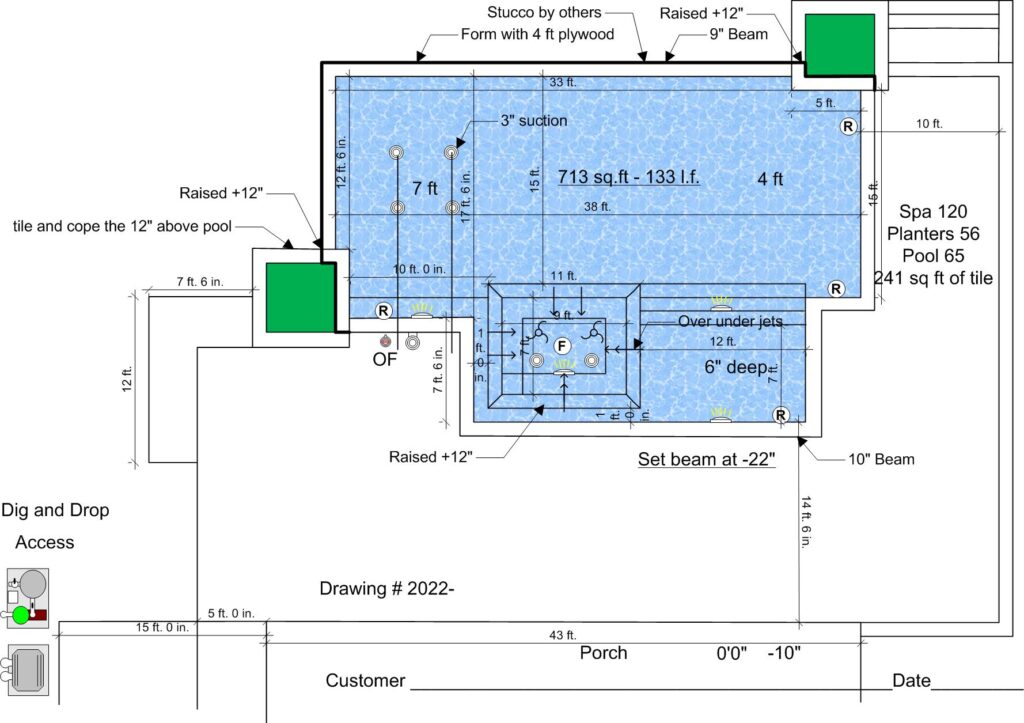
Fees
Refer to the fee schedule of the local jurisdiction.
Note
- Fences surrounding residential pools require separate permits and are subject to special requirements (refer to Section 305 Barrier Requirements of the 2021 ISPSC).
- Portable residential spas and portable residential exercise spas units shall be listed and labeled in accordance with UL 1563 or CSA C22.2 No. 218.1.
- The following is a recommendation: Pre-plaster inspection cannot be done unless the swimming pool barrier has been approved. Contact local jurisdiction for requirements.
- Provide pool barrier information on the drawings; refer to glazing requirements of Chapter 3, of 2021 IRC and local ordinances. (Impact resistance glazing is required when the glazing is within 5 feet of a swimming pool or spa water’s edge and the bottom edge of the glazing is less than 60” above the poolside of the glazing.)
- Where the fence is existing, it may be the pool installer’s responsibility to upgrade the pool barrier to comply with the pool barrier requirements. Contact local jurisdiction.
- Where the pool and fence are existing and only the fence is being replaced, the local jurisdiction may require the fence to comply with the pool barrier requirement.
- Permit holder is responsible for requesting and completing all required inspections.
- Diving board for residential pools (drawings required) shall comply with Table 804.1 and Figure 804.1 of the 2021 ISPSC
- Manufacturer specifications required for diving equipment including pool type and maximum height above the water.
- The energy consumption of pools and permanent spas shall be controlled by the requirements in Sections 303.1.1 through 303.3.1.3.
Diving Water Envelopes
The minimum diving water envelopes shall be in accordance with Table 804.1 and Figure 804.1. The dimensions in Table 804.1 are the absolute minimum.
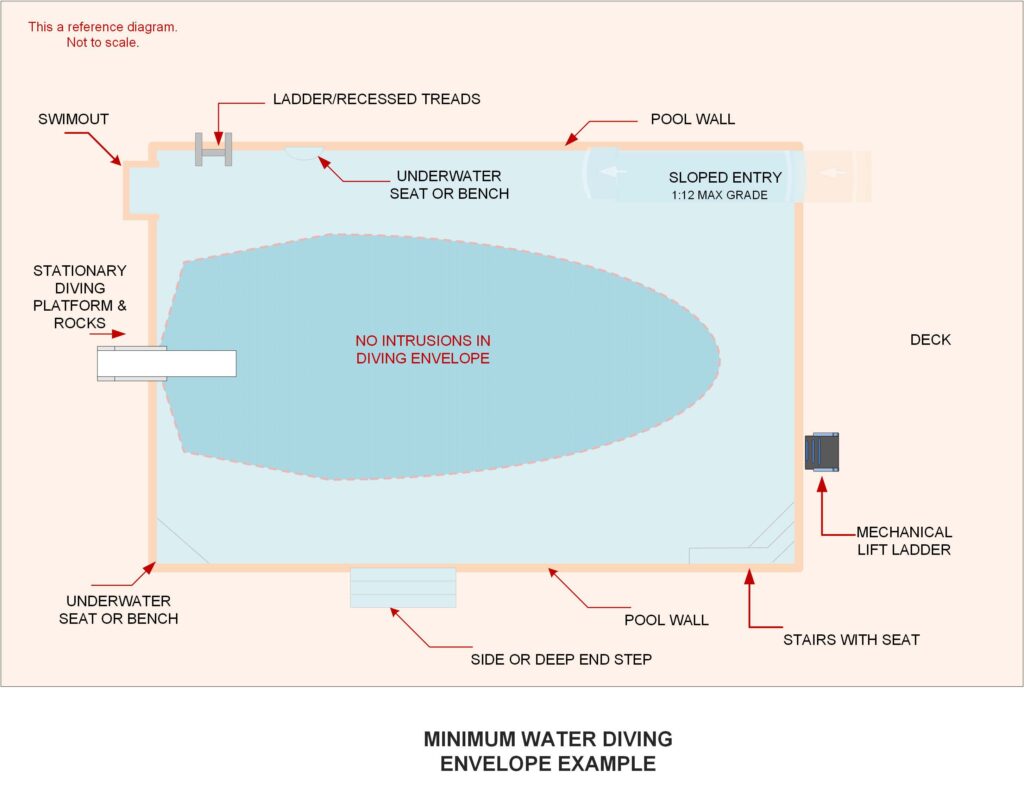

For SI: 1 inch = 25.4 mm, 1 foot = 304.8 mm
a. The minimum length between points C and D varies based upon water depth at point D and the floor slope between points C and D.
b. See Figure 804.1 for location of points
Pool Floors for Permanent Inground Pools
Section 807.1.1 requires the slope of the floor from the beginning of the shallow end to the deep area floor slope transition point, indicated in Figure 804.1 as Point E to Point D, not exceed one unit vertical to seven units horizontal. The rope and float line requirement noted in Section 811.1 is an indicator that alerts bathers they are getting close to the transition point to the deep end of the pool.
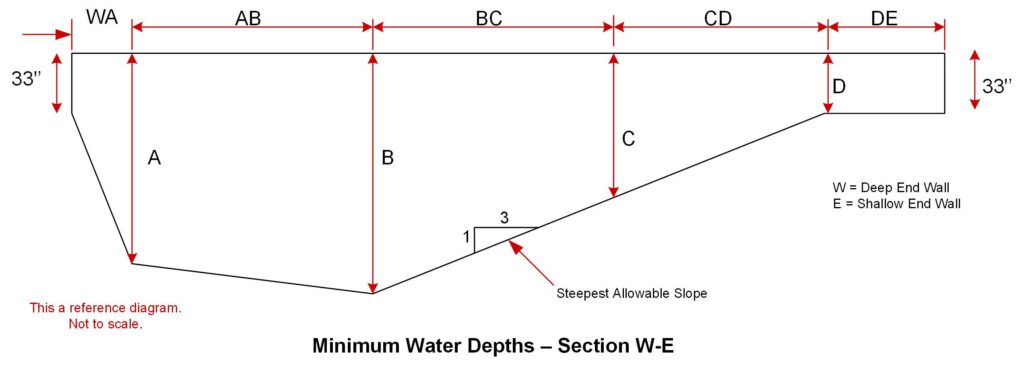
The change in the floor slope at the shallow-to-deep-end transition point is required to be at a water depth of not less than 33 inches (838 mm) and located not less than 6 feet (1829 mm) from the shallow-end pool wall. The floor of the shallow end of the pool must be at least 33 inches (838 mm) deep, but not more than 4 feet (1219 mm) deep, so that children and nonswimmers have a relatively safe area for the enjoyment of the pool.
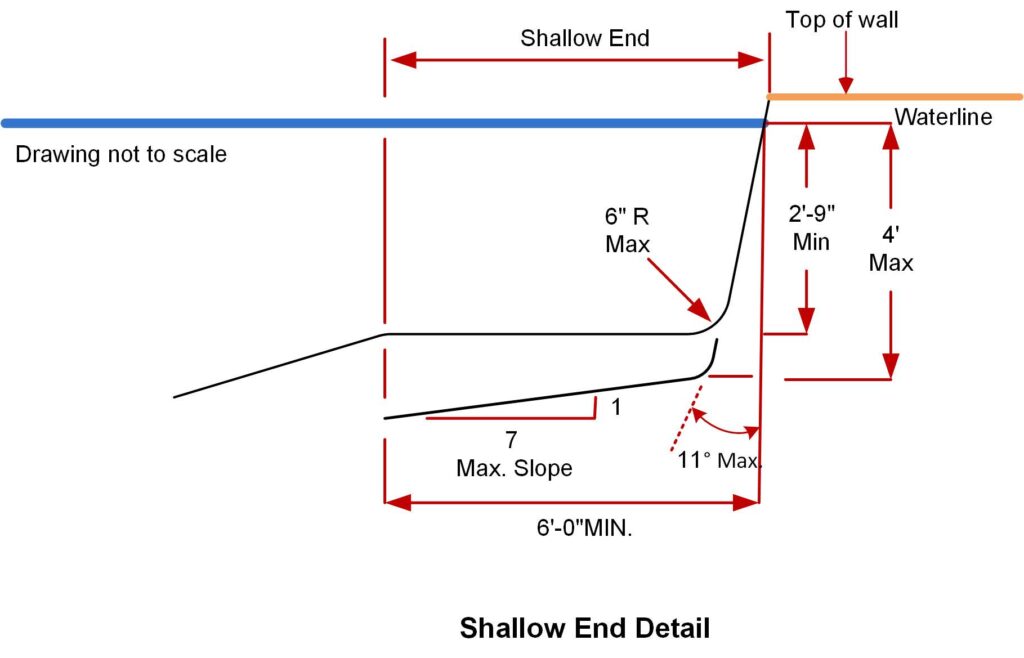
Visit the Code Council’s PMG website for more information and resources.








